An Educational Trading Card Game for a Medical Immunology Course
Abstract
1. Introduction
2. Materials and Methods
2.1. Participants
2.2. Intervention
- Killer Family: Natural Killer Cell, Killer T-Cell, and CAR T-Cell;
- Macrophage Family: Monocyte, Dendritic Cell, and Macrophage;
- B-Cell Family: B-Cell, Plasma Cell, and Memory B-Cell;
- Helper T Family: Helper T-Follicular, Helper T2, and Helper T1;
- Granulocyte Family: Mast Cell, Basophil, Eosinophil, and Neutrophil;
- Antibodies: IgM, IgA, IgE, and IgG.
2.3. Design
2.4. Game Mechanics
2.5. Play Session
2.6. Achievement Measurement
- Pretest: At the beginning of the course, both groups were asked to complete a multiple-choice question (MCQ) pretest to establish baseline knowledge.
- Posttest 1: After three weeks of instruction, both groups were given the same MCQ test as a posttest to measure knowledge retention.
- Posttest 2: Eight weeks after the initial posttest, the same MCQ test was administered again to measure long-term knowledge retention.
2.7. Data Collection
2.8. Data Analysis
2.9. Ethical Considerations
3. Results
3.1. Achievement
3.2. Engagement
- Enhanced Memory Retention and Recall: The students found the cards helped improve their long-term memory by associating complex immunological concepts with memorable visuals and mnemonics. This visual approach aided them in both encoding and retrieving information.
- Enjoyment, Engagement, and Fun Factor: The students frequently described the cards as enjoyable, entertaining, or “fun,” aspects they felt increased their motivation and engagement with the learning material.
- Visualization and Conceptual Clarity: The visual aspects of the cards were praised for aiding in the clarification of complex immune pathways, cascades, and interactions. The students found abstract concepts easier to understand when presented visually.
- Social and Collaborative Learning: The group “battle” format of the card game facilitated social interaction and peer learning, allowing the students to review material collaboratively in an engaging way.
- Mismatch with Exam Complexity: Some students felt that the level of detail and complexity of the cards did not fully align with the demands of exam material.
- Insufficient Instruction and Guidance: A need for a clearer explanation of how to effectively use the cards, as well as guidance in this regard, was expressed.
- Potential Time Constraints/Study Habits: Some students felt that the cards, while enjoyable, might not be the most efficient use of their study time or did not align with their preferred study methods.
4. Discussion
4.1. Limitations
4.2. Future Directions
5. Conclusions
Supplementary Materials
Author Contributions
Funding
Institutional Review Board Statement
Informed Consent Statement
Data Availability Statement
Conflicts of Interest
Abbreviations
| GBL | Game-Based Learning |
| STEM | Science, Technology, Engineering, and Math |
| TCG | Trading-Card Game |
| SIS-M | Situational Interest Survey of Multimedia |
| genAI | Generative Artificial Intelligence |
| Trig | Triggered Interest |
| MT | Maintained Interest |
| MF | Maintained Feeling |
| MV | Maintained Value |
| LLM | Large Language Model |
| MCQ | Multiple-Choice Question |
| LLM | Large Language Model |
References
- Abou Hashish, E. A., Al Najjar, H., Alharbi, M., Alotaibi, M., & Alqahtany, M. M. (2024). Faculty and students perspectives towards game-based learning in health sciences higher education. Heliyon, 10(12), e32898. [Google Scholar] [CrossRef] [PubMed]
- Abt, C. C. (1987). Serious games. Available online: http://books.google.com/books?id=axUs9HA-hF8C (accessed on 20 January 2025).
- Alomar, Z., Guo, M., & Bland, T. (2025). AI-generated mnemonic images improve long-term retention of coronary artery occlusions in STEMI: A comparative study. Technologies, 13(6), 217. [Google Scholar] [CrossRef]
- Altschul, D. M., & Deary, I. J. (2020). Playing analog games is associated with reduced declines in cognitive function: A 68-year longitudinal cohort study. The Journals of Gerontology: Series B, 75(3), 474–482. [Google Scholar] [CrossRef] [PubMed]
- Bartle, R. A. (2004). Designing virtual worlds. New Riders. [Google Scholar]
- Bellezza, F. S. (1981). Mnemonic devices: Classification, characteristics, and criteria. Review of Educational Research, 51(2), 247–275. [Google Scholar] [CrossRef]
- Berk, L. J., Muret-Wagstaff, S. L., Goyal, R., Joyal, J. A., Gordon, J. A., Faux, R., & Oriol, N. E. (2014). Inspiring careers in STEM and healthcare fields through medical simulation embedded in high school science education. Advances in Physiology Education, 38(3), 210. [Google Scholar] [CrossRef]
- Bhugra, D., & Molodynski, A. (2024). Well-being and burnout in medical students: Challenges and solutions. Irish Journal of Psychological Medicine, 41(2), 175–178. [Google Scholar] [CrossRef]
- Bland, T. (2025). Enhancing medical student engagement through cinematic clinical narratives: Multimodal generative AI-based mixed methods study. JMIR Medical Education, 11(1), e63865. [Google Scholar] [CrossRef]
- Bland, T., & Guo, M. (2024). Visual mnemonics and gamification: A new approach to teaching muscle physiology. Journal of Technology-Integrated Lessons and Teaching, 3(1), 73–82. [Google Scholar] [CrossRef]
- Bland, T., Guo, M., & Dousay, T. A. (2024). Multimedia design for learner interest and achievement: A visual guide to pharmacology. BMC Medical Education, 24(1), 113. [Google Scholar] [CrossRef]
- Blotnicky, K. A., Franz-Odendaal, T., French, F., & Joy, P. (2018). A study of the correlation between STEM career knowledge, mathematics self-efficacy, career interests, and career activities on the likelihood of pursuing a STEM career among middle school students. International Journal of STEM Education, 5(1), 22. [Google Scholar] [CrossRef]
- Chang, L. Y., Tang, Y. Y., Lee, C. Y., & Chen, H. C. (2022). The effect of visual mnemonics and the presentation of character pairs on learning visually similar characters for chinese-as-second-language learners. Frontiers in Psychology, 13, 2031. [Google Scholar] [CrossRef] [PubMed]
- ChatGPT—USMLE step1 question generator and refiner. (n.d.). Available online: https://chatgpt.com/g/g-7kZBti7XN-usmle-step1-question-generator-and-refiner (accessed on 10 August 2024).
- Clark, J. M., & Paivio, A. (1991). Dual coding theory and education. Educational Psychology Review, 3(3), 149–210. [Google Scholar] [CrossRef]
- Densen, P. (2011). Challenges and opportunities facing medical education. Transactions of the American Clinical and Climatological Association, 122, 48. [Google Scholar]
- Deterding, S., Dixon, D., Khaled, R., & Nacke, L. (2011, September 29–30). From game design elements to gamefulness: Defining “gamification”. Proceedings of the 15th International Academic MindTrek Conference: Envisioning Future Media Environments, MindTrek 2011 (pp. 9–15), Tampere, Finland. [Google Scholar] [CrossRef]
- Dousay, T. A. (2016). Effects of redundancy and modality on the situational interest of adult learners in multimedia learning. Educational Technology Research and Development, 64(6), 1251–1271. [Google Scholar] [CrossRef]
- Dousay, T. A., & Trujillo, N. P. (2019). An examination of gender and situational interest in multimedia learning environments. British Journal of Educational Technology, 50(2), 876–887. [Google Scholar] [CrossRef]
- Edwards, S. L., Zarandi, A., Cosimini, M., Chan, T. M., Abudukebier, M., & Stiver, M. L. (2024). Analog serious games for medical education: A scoping review. Academic Medicine, 100(3), 375–387. [Google Scholar] [CrossRef]
- Gentry, S. V., Gauthier, A., Ehrstrom, B. L. E., Wortley, D., Lilienthal, A., Car, L. T., Dauwels-Okutsu, S., Nikolaou, C. K., Zary, N., Campbell, J., & Car, J. (2019). Serious gaming and gamification education in health professions: Systematic review. Journal of Medical Internet Research, 21(3), e12994. [Google Scholar] [CrossRef]
- Graafland, M., Schraagen, J. M., & Schijven, M. P. (2012). Systematic review of serious games for medical education and surgical skills training. British Journal of Surgery, 99(10), 1322–1330. [Google Scholar] [CrossRef]
- Gu, J., Jiang, X., Shi, Z., Tan, H., Zhai, X., Xu, C., Li, W., Shen, Y., Ma, S., Liu, H., Wang, Y., & Guo, J. (2024). A survey on LLM-as-a-judge. Available online: https://arxiv.org/abs/2411.15594v3 (accessed on 20 January 2025).
- Gutierrez, C., Cox, S., & Dalrymple, J. (2016). The revolution in medical education. Texas Medicine, 112(2), 58–61. [Google Scholar] [PubMed]
- Hamari, J., Koivisto, J., & Sarsa, H. (2014, January 6–9). Does gamification work?—A literature review of empirical studies on gamification. Annual Hawaii International Conference on System Sciences (pp. 3025–3034), Waikoloa, HI, USA. [Google Scholar] [CrossRef]
- Ho, P. A., Girgis, C., Rustad, J., Noordsy, D., & Stern, T. (2021). Advancing medical education through innovations in teaching during the COVID-19 pandemic. The Primary Care Companion for CNS Disorders, 23(1), 25972. [Google Scholar] [CrossRef]
- Huang, J., Gu, S. S., Hou, L., Wu, Y., Wang, X., Yu, H., & Han, J. (2022, December 6–10). Large language models can self-improve. EMNLP 2023—2023 Conference on Empirical Methods in Natural Language Processing (pp. 1051–1068), Singapore. [Google Scholar] [CrossRef]
- Jones, J. S., Tincher, L., Odeng-Otu, E., & Herdman, M. (2015). An educational board game to assist PharmD students in learning autonomic nervous system pharmacology. American Journal of Pharmaceutical Education, 79(8), 114. [Google Scholar] [CrossRef] [PubMed]
- Khan, A., Ahmad, F. H., & Malik, M. M. (2017). Use of digital game based learning and gamification in secondary school science: The effect on student engagement, learning and gender difference. Education and Information Technologies, 22(6), 2767–2804. [Google Scholar] [CrossRef]
- Khorammakan, R., Omid, A., Mirmohammadsadeghi, M., & Ghadami, A. (2023). Puzzle game-based learning: A new approach to promote learning of principles of coronary artery bypass graft surgery. BMC Medical Education, 23(1), 241. [Google Scholar] [CrossRef]
- Klatt, E. C., & Klatt, C. A. (2011). How much is too much reading for medical students? Assigned reading and reading rates at one medical school. Academic Medicine, 86(9), 1079–1083. [Google Scholar] [CrossRef]
- Koivisto, J., & Hamari, J. (2019). The rise of motivational information systems: A review of gamification research. International Journal of Information Management, 45, 191–210. [Google Scholar] [CrossRef]
- Kuo, C. Y., Huang, Y. M., & Yeh, Y. Y. (2018). Let’s play cards: Multi-component cognitive training with social engagement enhances executive control in older adults. Frontiers in Psychology, 9, 2482. [Google Scholar] [CrossRef]
- Lubin, J., & Polloway, E. A. (2016). Mnemonic instruction in science and social studies for students with learning problems: A review. Learning Disabilities: A Contemporary Journal, 14(2), 207–224. [Google Scholar]
- Mayer, R. E. (2005). Introduction to multimedia learning. In The Cambridge handbook of multimedia learning (pp. 1–16). Cambridge University Press. [Google Scholar] [CrossRef]
- Mayer, R. E. (2012). Cognitive theory of multimedia learning. In The Cambridge handbook of multimedia learning (pp. 31–48). Cambridge University Press. [Google Scholar] [CrossRef]
- Mostafa, E. A., & El Midany, A. A. H. (2017). Review of mnemonic devices and their applications in cardiothoracic surgery. Journal of the Egyptian Society of Cardio-Thoracic Surgery, 25(1), 79–90. [Google Scholar] [CrossRef]
- NBME item-writing guide | NBME. (n.d.). Available online: https://www.nbme.org/educators/item-writing-guide (accessed on 24 July 2024).
- Noda, S., Shirotsuki, K., & Nakao, M. (2019). The effectiveness of intervention with board games: A systematic review. BioPsychoSocial Medicine, 13(1), 22. [Google Scholar] [CrossRef]
- Ober, C. (2018). Comparison of a novel card game and conventional case-based studying for learning urologic differential diagnoses in veterinary radiology. Education in the Health Professions, 1(2), 44. [Google Scholar] [CrossRef]
- O’Hanlon, R., & Laynor, G. (2019). Responding to a new generation of proprietary study resources in medical education. Journal of the Medical Library Association: JMLA, 107(2), 251. [Google Scholar] [CrossRef] [PubMed]
- Putnam, A. L. (2015). Mnemonics in education: Current research and applications. Translational Issues in Psychological Science, 1(2), 130–139. [Google Scholar] [CrossRef]
- Radović, T., & Manzey, D. (2019). The impact of a mnemonic acronym on learning and performing a procedural task and its resilience toward interruptions. Frontiers in Psychology, 10, 493110. [Google Scholar] [CrossRef]
- Samarasekera, D. D., Goh, P. S., Lee, S. S., & Gwee, M. C. (2018). The clarion call for a third wave in medical education to optimise healthcare in the twenty-first century. Medical Teacher, 40(10), 982–985. [Google Scholar] [CrossRef] [PubMed]
- Scruggs, T. E., & Mastropieri, M. A. (1990). Mnemonic instruction for students with learning disabilities: What it is and what it does. Learning Disability Quarterly, 13(4), 271–280. [Google Scholar] [CrossRef]
- Step 1 sample test questions | USMLE. (n.d.). Available online: https://www.usmle.org/exam-resources/step-1-materials/step-1-sample-test-questions (accessed on 24 July 2024).
- Sweller, J. (1994). Cognitive load theory, learning difficulty, and instructional design. Learning and Instruction, 4(4), 295–312. [Google Scholar] [CrossRef]
- van Gaalen, A. E. J., Brouwer, J., Schönrock-Adema, J., Bouwkamp-Timmer, T., Jaarsma, A. D. C., & Georgiadis, J. R. (2021). Gamification of health professions education: A systematic review. Advances in Health Sciences Education, 26(2), 683. [Google Scholar] [CrossRef]
- Vasquez, V. (2003). What pokemon can teach us about learning and literacy. Language Arts, 81(2), 118–125. [Google Scholar] [CrossRef]
- Vergara, D., Gómez-Vallecillo, A. I., Fernández-Arias, P., & Antón-Sancho, Á. (2023). Gamification and player profiles in higher education professors. International Journal of Game-Based Learning (IJGBL), 13(1). [Google Scholar] [CrossRef]
- Vita-Barrull, N., Estrada-Plana, V., March-Llanes, J., Guzmán, N., Fernández-Muñoz, C., Ayesa, R., & Moya-Higueras, J. (2023). Board game-based intervention to improve executive functions and academic skills in rural schools: A randomized controlled trial. Trends in Neuroscience and Education, 33, 100216. [Google Scholar] [CrossRef]
- von Steinkeller, A., & Grosse, G. (2022). Children are more social when playing analog games together than digital games. Computers in Human Behavior Reports, 6, 100195. [Google Scholar] [CrossRef]
- Wang, J., Liu, Z., Zhao, L., Wu, Z., Ma, C., Yu, S., Dai, H., Yang, Q., Liu, Y., Zhang, S., Shi, E., Pan, Y., Zhang, T., Zhu, D., Li, X., Jiang, X., Ge, B., Yuan, Y., Shen, D., … Zhang, S. (2023). Review of large vision models and visual prompt engineering. Meta-Radiology, 1(3), 100047. [Google Scholar] [CrossRef]
- Wang, R., DeMaria, S., Goldberg, A., & Katz, D. (2016). A systematic review of serious games in training: Health care professionals. Simulation in Healthcare, 11(1), 41–51. [Google Scholar] [CrossRef] [PubMed]
- White, J., Fu, Q., Hays, S., Sandborn, M., Olea, C., Gilbert, H., Elnashar, A., Spencer-Smith, J., & Schmidt, D. C. (2023). A prompt pattern catalog to enhance prompt engineering with ChatGPT. Available online: https://arxiv.org/abs/2302.11382v1 (accessed on 18 June 2024).
- Williams, D., Yee, N., & Caplan, S. E. (2008). Who plays, how much, and why? Debunking the stereotypical gamer profile. Journal of Computer-Mediated Communication, 13(4), 993–1018. [Google Scholar] [CrossRef]
- Worthley, B., Guo, M., Sheneman, L., & Bland, T. (2025). Antiparasitic pharmacology goes to the movies: Leveraging generative AI to create educational short films. AI, 6(3), 60. [Google Scholar] [CrossRef]
- Xu, M., Luo, Y., Zhang, Y., Xia, R., Qian, H., & Zou, X. (2023). Game-based learning in medical education. Frontiers in Public Health, 11, 1113682. [Google Scholar] [CrossRef]
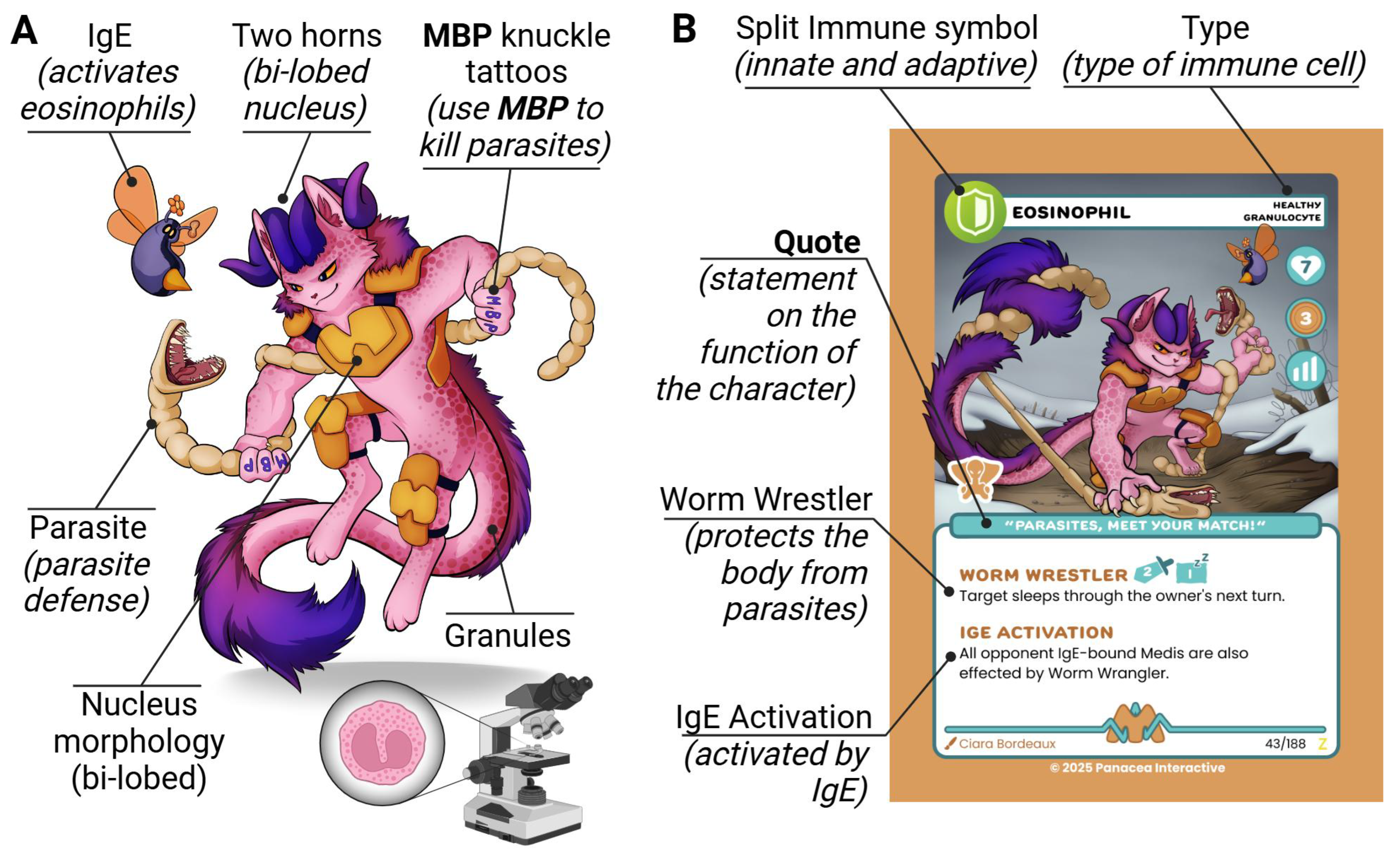
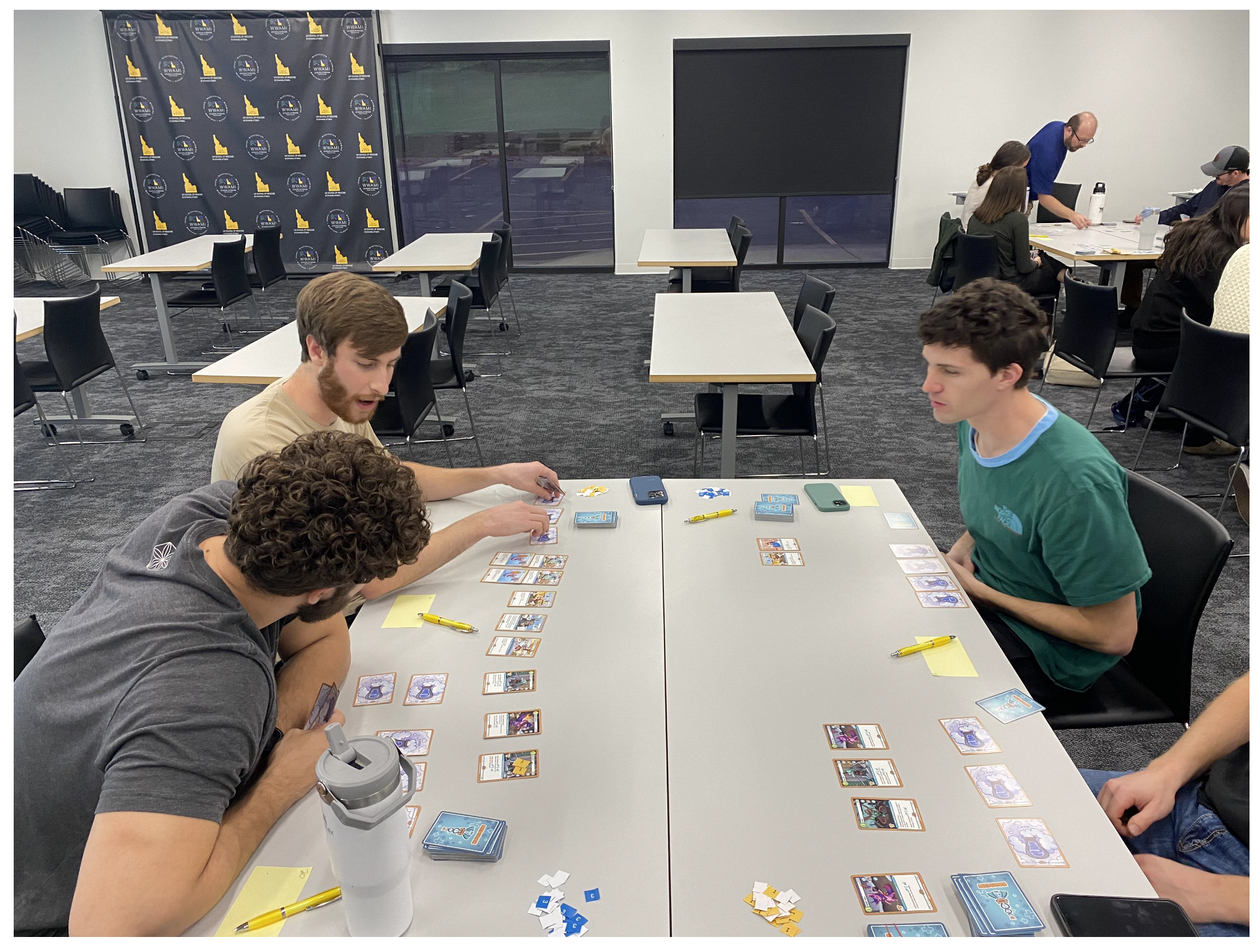
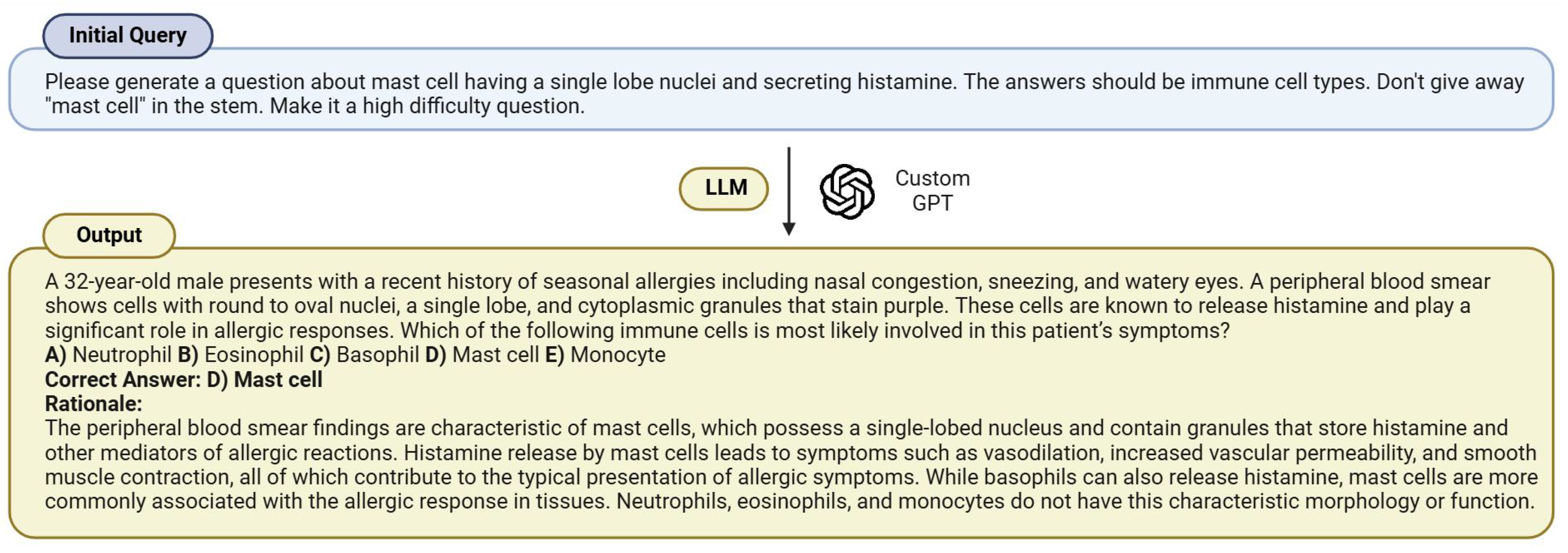
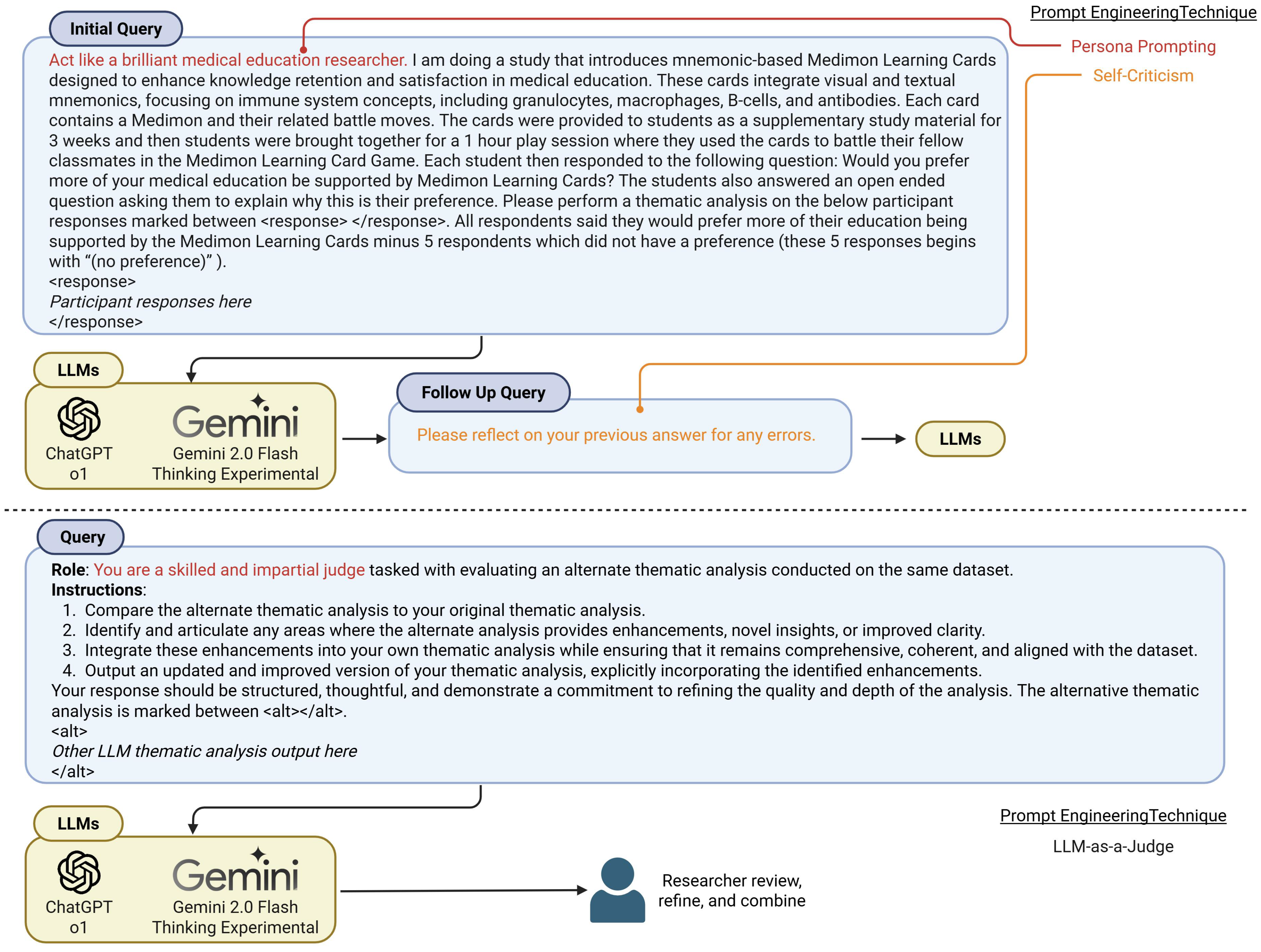
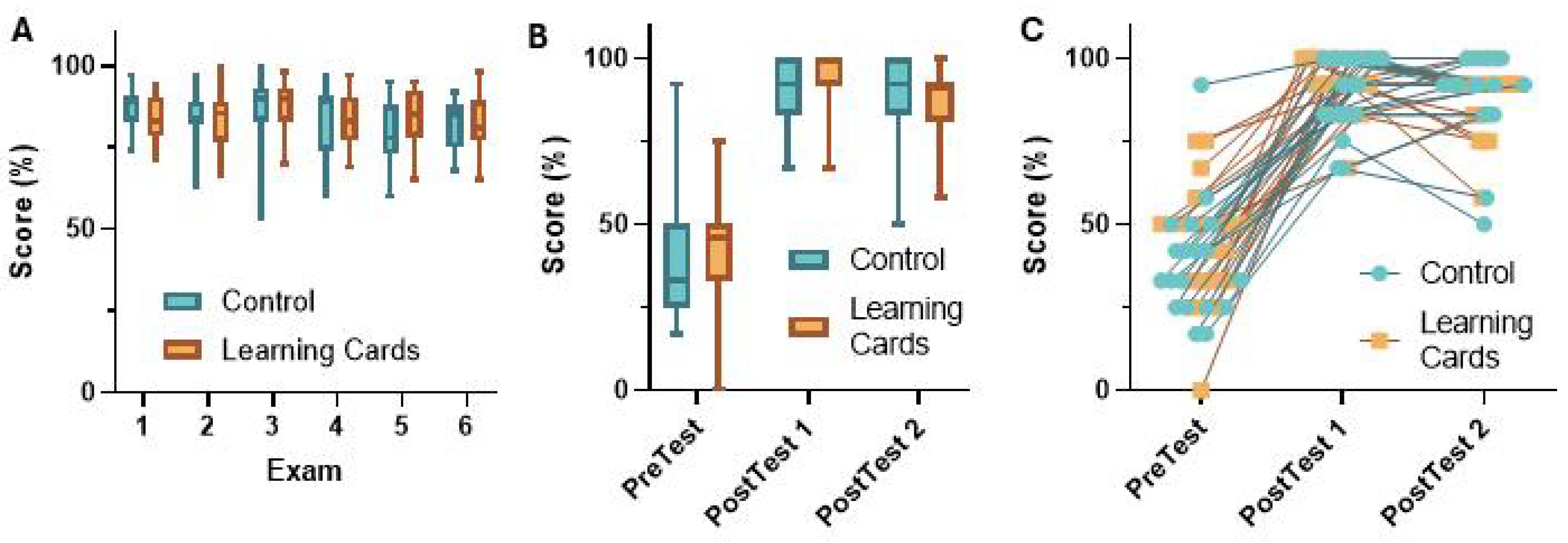
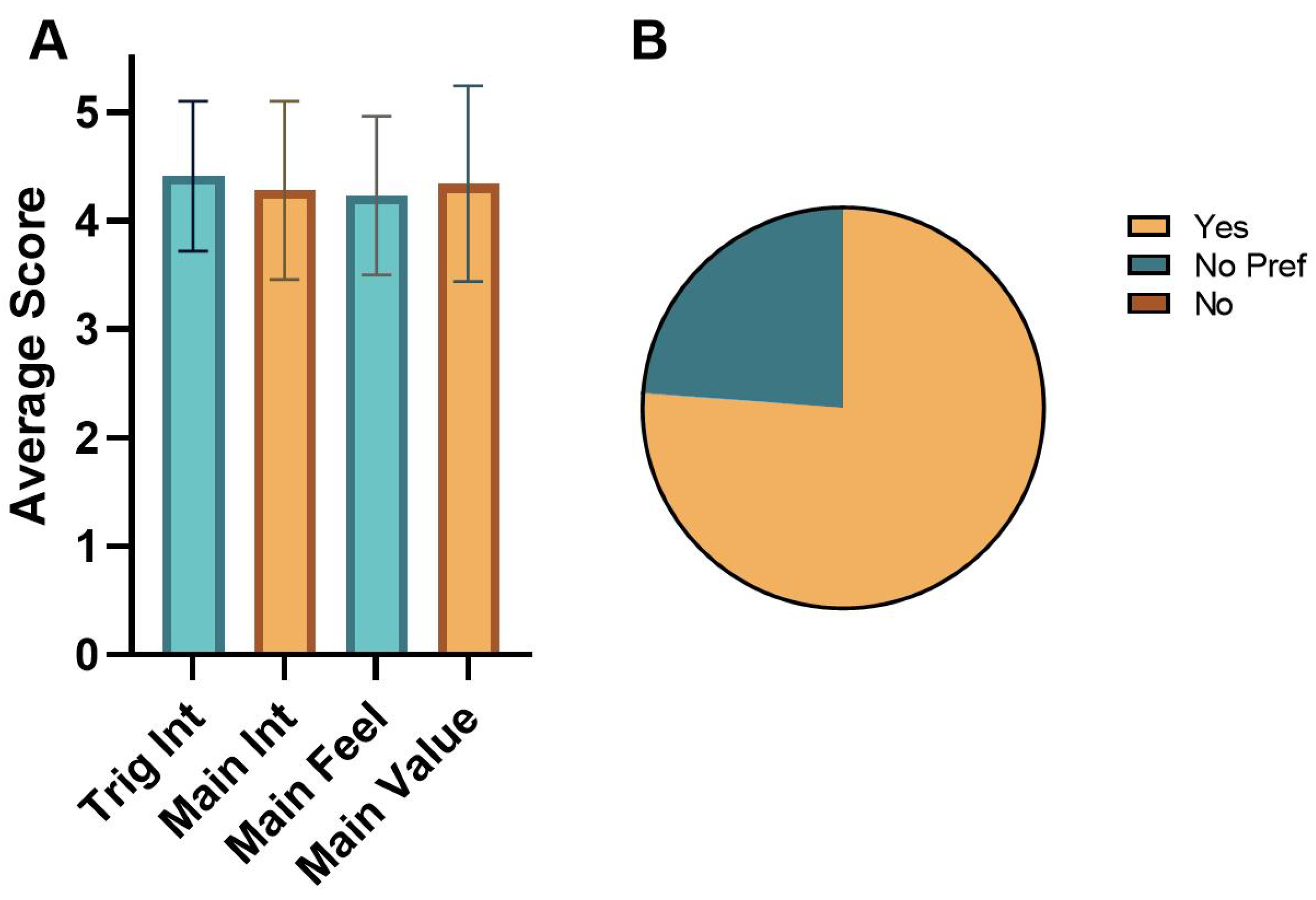
| Site | Pretest % (SD) | Posttest 1 % (SD) | Change in Score% | DiD (LC − CG, %) | t | p (Two-Tailed) |
|---|---|---|---|---|---|---|
| LC | 43.8 (17.9) | 92.5 (8.5) | 48.8 | |||
| CG | 36.8 (17.4) | 89.5 (11.4) | 50.8 | −2.1 | −0.31 | 0.76 |
| Site | Posttest 1 % (SD) | Posttest 2 % (SD) | Change in Score% | DiD (LC − CG, %) | t | p (Two-Tailed) |
|---|---|---|---|---|---|---|
| LC | 93.1 (8.7) | 87.0 (10.4) | −6.1 | |||
| CG | 89.4 (11.7) | 88.9 (14.0) | −0.5 | −5.6 | −1.4 | 0.17 |
Disclaimer/Publisher’s Note: The statements, opinions and data contained in all publications are solely those of the individual author(s) and contributor(s) and not of MDPI and/or the editor(s). MDPI and/or the editor(s) disclaim responsibility for any injury to people or property resulting from any ideas, methods, instructions or products referred to in the content. |
© 2025 by the authors. Licensee MDPI, Basel, Switzerland. This article is an open access article distributed under the terms and conditions of the Creative Commons Attribution (CC BY) license (https://creativecommons.org/licenses/by/4.0/).
Share and Cite
Singleton, V.; Bordeaux, C.; Ferguson, E.; Bland, T. An Educational Trading Card Game for a Medical Immunology Course. Educ. Sci. 2025, 15, 768. https://doi.org/10.3390/educsci15060768
Singleton V, Bordeaux C, Ferguson E, Bland T. An Educational Trading Card Game for a Medical Immunology Course. Education Sciences. 2025; 15(6):768. https://doi.org/10.3390/educsci15060768
Chicago/Turabian StyleSingleton, Vincent, Ciara Bordeaux, Emma Ferguson, and Tyler Bland. 2025. "An Educational Trading Card Game for a Medical Immunology Course" Education Sciences 15, no. 6: 768. https://doi.org/10.3390/educsci15060768
APA StyleSingleton, V., Bordeaux, C., Ferguson, E., & Bland, T. (2025). An Educational Trading Card Game for a Medical Immunology Course. Education Sciences, 15(6), 768. https://doi.org/10.3390/educsci15060768





